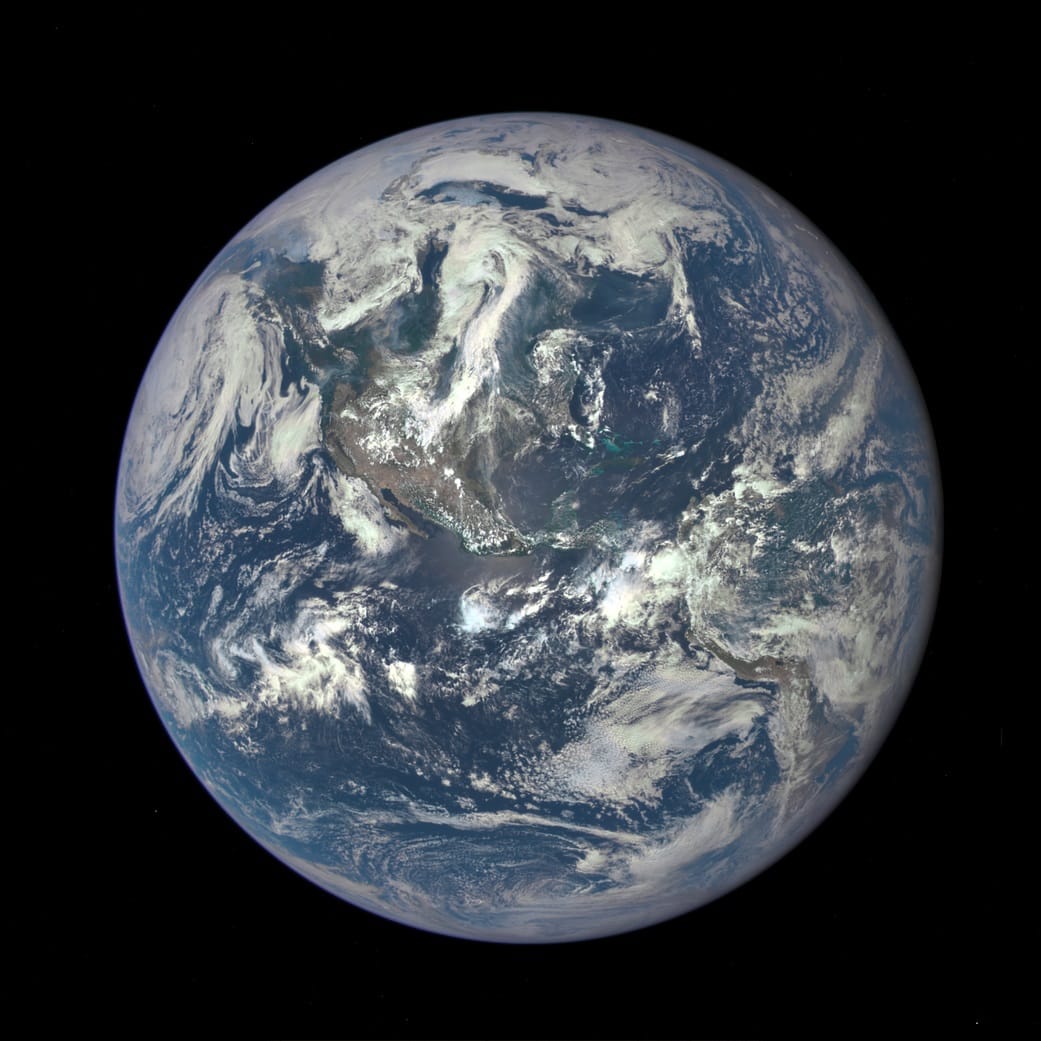Welcome back to the Abstract! Here are the studies that caught my eye this week.
First up, a bummer! NASA is facing devastating cuts to Earth science, and science in general, which is pretty important for an agency tasked with understanding the universe. I try to keep this newsletter relatively downer-free, but current events are not cooperating with this aim.
Then: the early bird gets the comet, a donkey destined for decapitation, a grand universal theory of coolness, and the case of the stolen exomoons.
Knowing about the planet we live on is good, actually
Millet, Dylan et al. “NASA Earth Science Division provides key data.” Science.
This may sound obvious for the esteemed readers of this newsletter, but it apparently bears repeating: Earth, our home planet and the only known life-bearing world in the vast expanse of spacetime, is worthy of some passing interest.
This is true because—and I can’t stress this enough—we live on planet Earth. All our bones and guts and snacks are here, so it’s probably wise to get the lay of the land. But as a bonus, Earth is wildly interesting, a restless substrate unlike anything we have seen in our own solar system or beyond it.
Despite these considerations, the Trump administration plans to gut NASA’s Earth Science Division (ESD), the world leader in world-watching. In a letter published in Science, researchers from the recently dissolved NASA Earth Science Advisory Committee lamented the administration’s proposed budget cut of more than 50 percent to ESD, warning that it “would come at a profound cost to US society and scientific leadership.”
“NASA ESD accounted for just 0.03 percent of US spending in 2024,” said researchers led by Dylan Millet of the University of Minnesota. “This investment returns its value many times over by improving predictions, by spurring technological innovation and high-tech jobs, and by forging the knowledge of the planet that is needed for short- and long-term planning.”
“The budget cuts proposed for ESD would cancel crucial satellites that observe Earth and its atmosphere, gut US science and engineering expertise, and potentially lead to the closure of NASA research centers,” the team said. “Given that the cuts would prevent the US from training and preparing the next generation of the scientific and technical workforce, the consequences would be long-lasting.”
This is just the latest appeal from scientists on behalf of NASA, which is also facing catastrophic cuts to its overall Science Mission Directorate (SMD), the arm that oversees ESD. Last week, every past administrator of the SMD, the agency's top job for science leadership, signed a letter urging Congress to reject the cuts of about 47 percent to the directorate.
“Each one of us knows what it’s like to shepherd an ambitious project forward, knowing that its payoff will come years after we have left the agency,” the administrators said. “This proposed budget ends nearly all future investments for both new missions and advanced technology for science. It walks away from dozens of current, extraordinarily successful and productive science missions in extended operations on a combined budget that is only about three percent of NASA’s annual funding.”
Fortunately, the US Senate appropriations committee has voted in favor of a bill rejecting the science cuts, but it has a long road to go down before taking effect, with plenty of opportunity to fall apart.
Needless to say, turning a blind eye to Earth at a time when our activities are reshaping its climate and biosphere, would be a huge loss. As one last twist of the knife, Trump just gave the top job at NASA to the guy from The Real World—all while ignoring the actual real world.
In other news…
Mark your calendars for July 2061
Prepare for the return of everyone’s favorite space iceball: Comet Halley. Scientists have flagged the comet’s next visit as arriving in the summer of 2061 and proposed an audacious space rendezvous with Halley on its wild ride toward the Sun.
“Although the crucial phases of the comet’s ingress in the inner Solar System are still more than 30 years in the future, we started to examine the feasibility of a space mission using present-day rockets and technologies,” said researchers led by Cesare Barbieri of the University of Padova.
God bless the astro-preppers. Sure, this event will occur decades into the future, in the twilight of the millennials. But they make a pretty good case that we should get moving if we want to take full advantage of the iconic visitor, which “will be better positioned for observation from terrestrial observers than during the 1985–1986 apparition, as it will be on the same side of the Sun as the Earth.”
“We stress that a concerted effort is needed in the current decade to plan and approve a rendezvous mission to [Comet Halley],” the team concluded. “Indeed, the scenario here described needs launches before 2040, less than 15 years from now.”
The last days of a sacrificial ass
Who would have guessed that a study about a Bronze Age donkey corpse would be a tear-jerker? Researchers have shed new light on female donkeys (or jennies), which were imported from Egypt to the Tell es-Safi/Gath site in Israel some 5,000 years ago for ritual purposes.
One specimen, called EQ1, is particularly noteworthy because it was decapitated and had its limbs tied together, unlike all the other donkeys buried at the site. "It is evident the animal was sacrificed, the head entirely cut off and carefully placed on the abdomen facing in the opposite direction,” said researchers led by Elizabeth Arnold of Grand Valley State University.
“It can be deduced that even though EQ1 was grazed locally toward the end of her life, she was treated slightly differently from the other local equids,” the team continued. “This imported donkey was kept penned and foddered with hay that was harvested in the valley, a product of dry farmed cereals. This donkey was never herded with other livestock east of the site.”
The unique treatment of EQ1 suggests that the “Egyptian donkey might have been seen as an exotic and special animal, worthy of specific ritual use,” the study concluded. While it’s truly impressive that so much about this jenny can be inferred from her bones, there’s also an eerie pathos to imagining the animal hanging out for months, receiving preferential treatment, unaware of the sand flowing through the hourglass.
It’s a real cool club, and you’re not part of it
Pezzuti, Todd and Warren Caleb et al. “Cool People,” Journal of Experimental Psychology.
Science has invested its prodigious powers into the ultimate social mystery: What makes a person “cool”? Is it putting “cool” in scare quotes? (No!). Researchers have now developed a working theory of coolness by asking nearly 6,000 people in Australia, Chile, China, Hong Kong, Germany, India, Mexico, Nigeria, Spain, South Africa, South Korea, Turkey, and the United States to define this much-coveted attribute.
The results revealed six main traits associated with cool people, which were distinct from traits linked with “good” people. “Cool people are perceived to be more extraverted, hedonistic, powerful, adventurous, open, and autonomous, whereas good people are more conforming, traditional, secure, warm, agreeable, universalistic, conscientious, and calm,” said authors Todd Pezzuti of Universidad Adolfo Ibañez, Caleb Warren of the University of Arizona, and Jinjie Chen of the University of Georgia.
“This pattern is stable across countries, which suggests that the meaning of cool has crystallized on a similar set of values and traits around the globe,” the team said.
There you go, the cheat code to coolness. I’m exhausted just reading it.
Grand Theft Moons
The winner of Best Study Title this week goes to “Grand theft moons,” which explores how stars might steal moons from their own planets, and whether these “exomoons” could be habitable. The study models the formation of exomoons around giant gas worlds at various distances from their stars, measured in astronomical units (au), where one au is the distance between Earth and the Sun.
Planets with orbits of one or two au are more likely to sport exomoons in the habitable zone, but they are also at risk of stars yanking the exomoons away in brazen acts of “stellar theft,” according to the study.
“Our simulations show that moons with masses between Mars and Earth could form around planets with masses about ten times that of Jupiter, and many of these moons could potentially be habitable at 1 − 2 au stellar distances,” said researchers led by Zoltán Dencs of the Gothard Astrophysical Observatory, “These findings suggest that it is worth investigating not only rocky planets but also gas giants for Earth-like habitable environments.”
In addition to raising some fascinating questions, let’s hope this study inspires Rockstar to take the GTA franchise to outer space. I want to throw an astronaut off a lunar buggy and take it for a joyride across the Moon.
Thanks for reading! See you next week.

